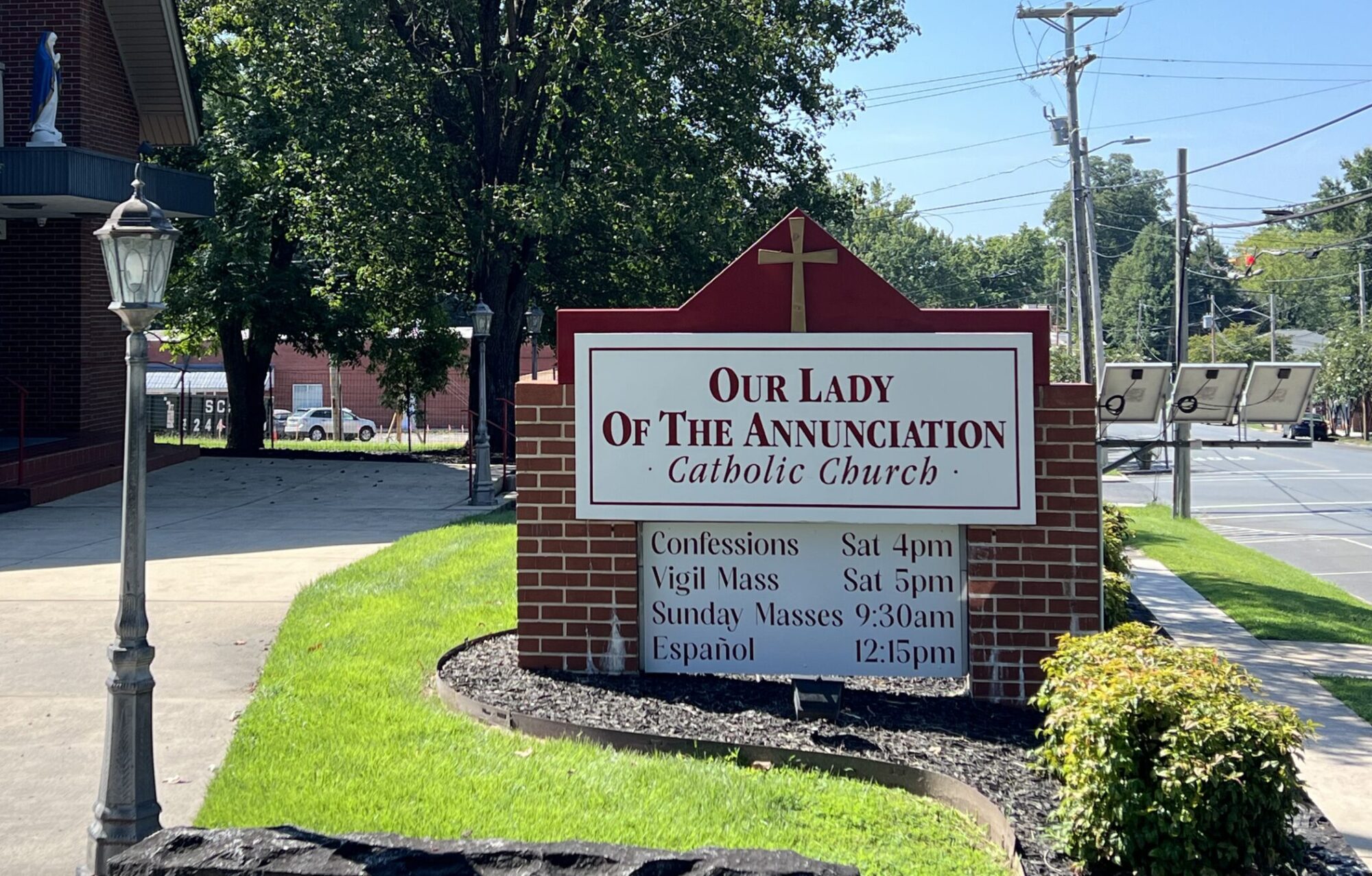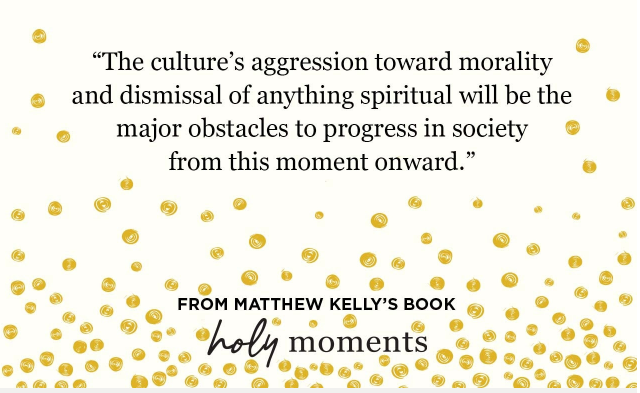
Daily Reflection – Make Every Encounter a Spiritual Exercise


416 N 2nd St, Albemarle NC 28001 | (704) 982-2910


Fr. Mike examines the two senses of Scripture: the literal sense and the spiritual sense. Together, we further unpack the meaning of the literal sense of Scripture and the three subdivisions of the spiritual sense: the allegorical, the moral, and the anagogical senses. Fr. Mike provides us with scriptural examples of each of the four senses for us to fully comprehend the richness of God’s Word. Today’s readings are Catechism paragraphs 115-119.
Click on the link to play video: https://youtu.be/KlEbSJZLXH0


We have all seen the rod of Asclepius, or its common variation, the caduceus, on medical insignia throughout the world. It was the symbol of this Greek god of healing, but is also found here in our First Reading from the book of Numbers (21:4–9). It is a single or double serpent winding around a pole, and we are not sure if the Greeks or the Hebrews had it first. But surely its meaning was a universal discovery that today we would perhaps call vaccination! In short, “the cause is also the cure”! Who would have thought? It seems to be true both medically and psychologically. At any rate, we have Moses prescribing such medicine to the complaining Hebrews in the desert, who were being bit by winged/fiery serpents. The meaning and healing symbol returns again in John’s Gospel on many levels, all of them significant. The recurring phrase is, “the lifted up one.” It has now become a rallying cry for the Jesus who was raised up on the cross and thus “vaccinated us against” doing the same (3:13 and 19:37). Jesus being “lifted up” is offered as a healing icon of love to all of history (12:32), and finally, as a victory sign of the final resurrection and ascension of all the human ones, as is prefigured in today’s account about the archetypal “Human One,” Jesus (8:28). This is powerful material, just as vaccinations always are. We have a Divine Medicine brought down to a small but potent dosage so we can handle it and it can handle us! That is what true spiritual symbols always do. Remember what we said earlier in Lent: Any direct contact with God is like contact with an electric wire—it burns you unless you have some good filters and a very humble humanity to receive it. No wonder so many Catholics and Orthodox never tired of hanging images of the crucified Jesus in their homes and in their churches. We needed to “lift up” and “gaze upon” the transformative image just as Moses first did in the desert. It can and did and will change many lives and much of history.
— from the book Wondrous Encounters: Scriptures for Lent
by Richard Rohr, OFM, page 106
//Franciscan Media//

Your body is spiritual. There are not two halves of you: soul versus body. You are one whole, made in the image of a God who is integrated and indivisible. Your relationship to your body cannot be separated from the health of your soul, for the two are intertwined to make up all that it means to be you. Your flesh and bones are sacred; they connect you to your soul’s experience of the divine. Science indicates that your body is composed partly of stardust. Faith tells us this was no accident. The presence of your body on this earth today is a miracle—a massive statistical improbability. And yet here you are, held fast in the divine generosity of this body you were given. Here you are, your flesh and bones a product of a perfect, generative, mysterious Love; a Love that holds all things together.
The contemplative tradition centers on an awareness of the reality that all things are interconnected; all things find oneness within one another, and thereby within God. With this contemplative posture in mind, think about the miracle of your body’s existence on the planet, here against all odds. Let yourself be amazed and humbled. As you come to honor your place in the universal life of God, see if you can notice and physically feel the gratitude in your body.
—from Luminous: A 30-Day Journal for Accepting Your Body, Honoring Your Soul, and Finding Your Joy,
by Shannon K. Evans
//Franciscan Media//

Only when inner and outer authority come together do we have true spiritual wisdom. We have for too long insisted on outer authority alone, without any teaching of prayer, inner journey, and maturing consciousness. The results for the world and for religion have been disastrous. I am increasingly convinced that the word prayer, which has become a functional and pious thing for believers to do, is, in fact, a descriptor for inner experience. That is why all spiritual teachers mandate prayer so much. They are saying, “Go inside and know for yourself!” We will understand prayer and inner experience this way throughout this book. As Jesus graphically puts it, prayer is “going to your private room and shutting the door and [acting] in secret” (Matthew 6:6). Once you hear it this way, it becomes pretty obvious.
— from the book Things Hidden: Scripture as Spirituality by Richard Rohr, page xv
//Franciscan Media//

What is the law really for? It’s not to make God love us. That issue is already solved, once and forever, and we are powerless to change it in one direction or the other. The purpose of spiritual law is simply to sharpen our awareness about who we are and who God is, so that we can name our own insufficiency and, in that same movement, find God’s fullness. That’s why saints like Francis are invariably saying, in effect, “I’m nothing. Everything I’ve done that’s good has come from God. The only things I can claim are my own sins.” He is not being overly humble, just truthful. In such people, the law has achieved its full purpose.
—from the book Things Hidden: Scripture as Spirituality by Richard Rohr, OFM

Spiritual desire is the longing of the heart for relationship with God that brings happiness and peace. Francis of Assisi was a passionate person, a dreamer, a lover and a person of desire. When he felt his desire filled in hearing the gospel, he found the answer to his deepest longings and changed his life accordingly. He became a follower of Christ. Francis’ life shows us that we must be attentive to our desires if we are to find the fulfillment of our lives in God.
— from the book Franciscan Prayer
//Franciscan Media//

What is the law really for? It’s not to make God love us. That issue is already solved, once and forever, and we are powerless to change it in one direction or the other. The purpose of spiritual law is simply to sharpen our awareness about who we are and who God is, so that we can name our own insufficiency and, in that same movement, find God’s fullness. That’s why saints like Francis are invariably saying, in effect, “I’m nothing. Everything I’ve done that’s good has come from God. The only things I can claim are my own sins.” He is not being overly humble, just truthful. In such people, the law has achieved its full purpose.
—from the book Things Hidden: Scripture as Spirituality by Richard Rohr, OFM
//Franciscan Media//

Only when inner and outer authority come together do we have true spiritual wisdom. We have for too long insisted on outer authority alone, without any teaching of prayer, inner journey, and maturing consciousness. The results for the world and for religion have been disastrous. I am increasingly convinced that the word prayer, which has become a functional and pious thing for believers to do, is, in fact, a descriptor for inner experience. That is why all spiritual teachers mandate prayer so much. They are saying, “Go inside and know for yourself!” We will understand prayer and inner experience this way throughout this book. As Jesus graphically puts it, prayer is “going to your private room and shutting the door and [acting] in secret” (Matthew 6:6). Once you hear it this way, it becomes pretty obvious.
— from the book Things Hidden: Scripture as Spirituality by Richard Rohr
//Franciscan Media//